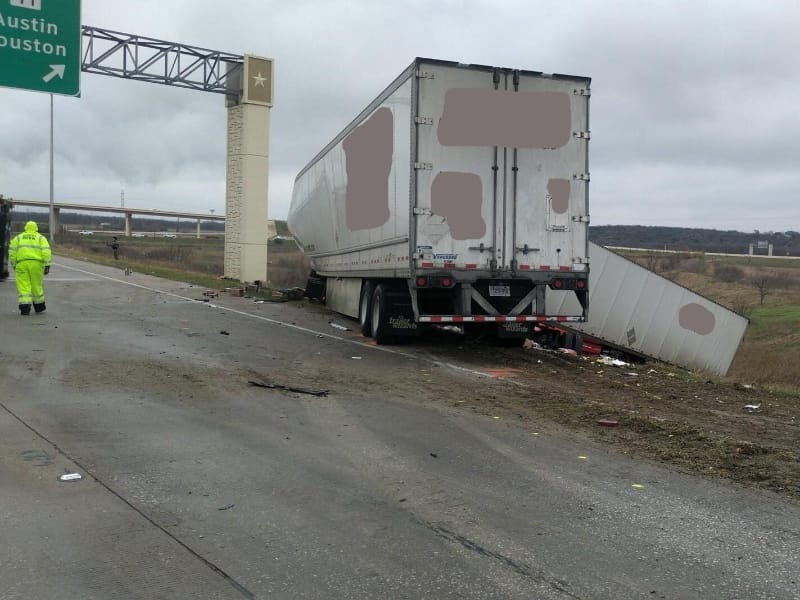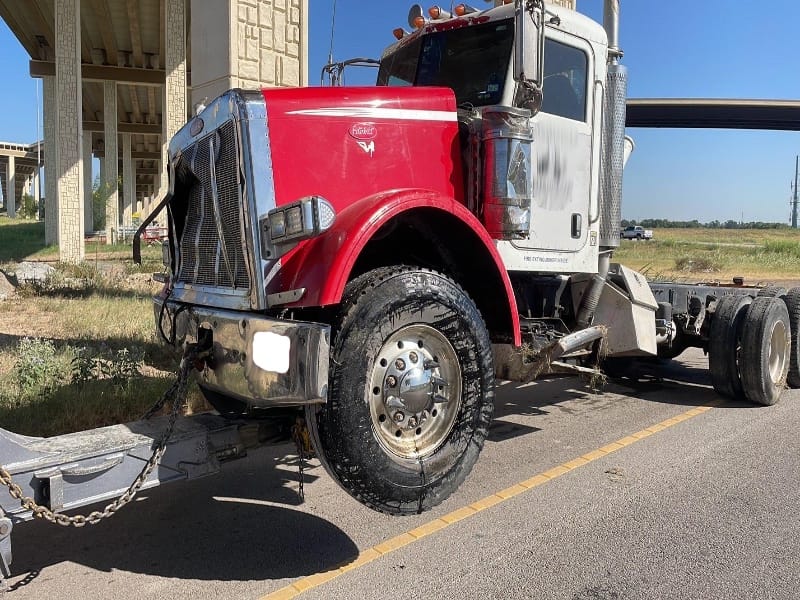The Jackknife Threat Is Real
The dreaded jackknife: it can wreck a schedule, damage a rig, and put lives at risk. As a tow truck company handling I-35 semi towing day in and day out, we’ve seen firsthand what happens when things go sideways—literally. Rain hits harder, traffic moves faster, and one misjudgment can send a fully loaded semi into a dangerous skid. That’s why we’re laying out the habits that help keep trailers in line and prevent the kind of calls we hope you never have to make.

Why Jackknifing Happens
One sharp brake. A slick curve. A panicked swerve. It doesn’t take much for a trailer to start swinging. Jackknifing often starts when the trailer pushes faster than the cab, folding the rig into a V-shape that’s nearly impossible to straighten once it begins. The I-35 semi towing recoveries we respond to so often begin with that chain reaction. That’s why we’re sharing our top tips to help minimize your chances of jackknifing.
Tip #1: Avoid Sudden Braking
A hard brake on slick pavement is one of the fastest ways to jackknife. Instead of waiting until the last second to slow down, drivers can stay ahead of the situation with steady, gradual braking and downshifting whenever possible. Relying too much on service brakes can increase the risk of the trailer swinging forward.
To maintain control:
- Brake smoothly and early.
- Use engine braking to manage speed on long grades.
- Keep a cushion of at least six seconds behind the next vehicle.
On a busy stretch like I-35, that extra space gives the breathing room needed to avoid panic moves.
Tip #2: Balance That Load
An unbalanced load makes the drive harder and can turn a routine maneuver into a jackknife situation. When weight isn’t evenly distributed, especially toward the rear, the trailer becomes more likely to lose grip and swing outward.
In some I-35 semi towing jobs, the real cause was back in the cargo bay. That’s why it’s critical to make sure freight is:
- Centered over the axles,
- Properly secured to prevent shifting,
- Loaded according to weight distribution guidelines.
Even weight helps keep the trailer following the cab instead of trying to overtake it.
Tip #3: Slow Down Before You Turn
Speed and corners never mix. Every turn has a safe speed, but too many rigs enter curves too hot. The right time to reduce speed is before the turn, not during it. Hitting the brakes mid-curve transfers weight unevenly and increases the chance of a trailer skid.
I-35 is full of tricky curves, especially around exits, construction zones, and overpasses. Drivers who treat each one like there’s a hazard just out of sight tend to stay out of our tow queue.
Tip #4: Aggressively Adjust for Weather
Rain, ice, and fog are warning signs. Jackknife incidents can happen in seconds because a rig didn’t adjust enough for deteriorating road conditions.
Here’s what drivers can do in bad weather:
- Lower speed dramatically.
- Skip cruise control on slick roads.
- Add two more seconds of following distance.
- Make every lane change and turn as gradual as possible.
Slower and smoother wins every time. The recoveries we handle during storms almost always trace back to a loss of traction or an aggressive correction.
Tip #5: Scan the Road Like It’s Your Job (Because It Is)
Distracted driving leads to delayed reactions, and delayed reactions cause jackknifing. A driver glancing down at a phone or GPS can miss signs of trouble up ahead.
Drivers should keep their eyes scanning 10 to 15 seconds ahead, looking for brake lights, merging traffic, shifting weather, and everything else that could require a quick adjustment. Because jackknifing gives no warning, it just happens.

Count on Southside Wrecker for I-35 Semi Towing When Things Go Sideways
Jackknifing is often the end result of split-second decisions made under pressure or made too late. As a heavy towing team that specializes in I-35 semi towing, we know very well that even the best drivers can’t control everything. If a jackknife lands you on the shoulder or tangled across lanes, Southside Wrecker is ready to respond. Our I-35 semi towing team knows how to recover heavy trucks from dangerous spots, clear wrecks fast, and get you back on track without extra headaches. When control slips and the trailer swings, our I-35 semi towing operators show up with solutions.

